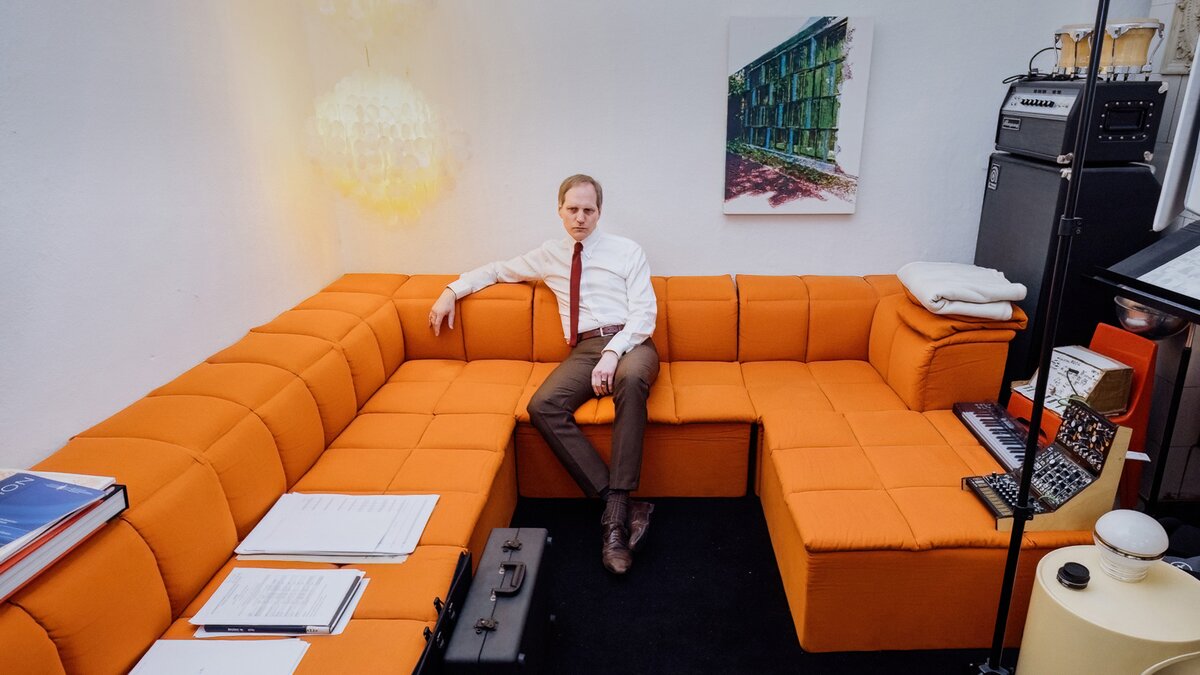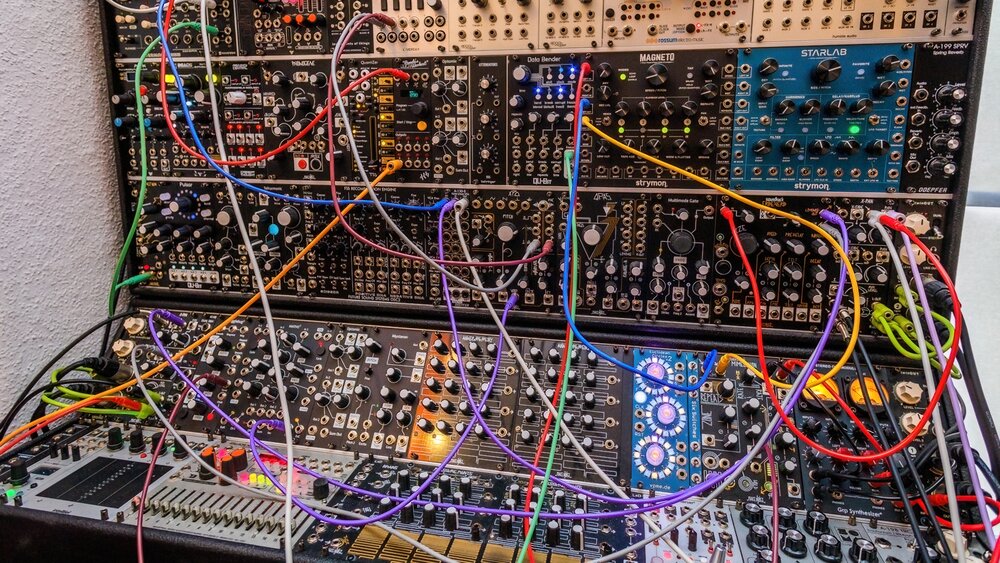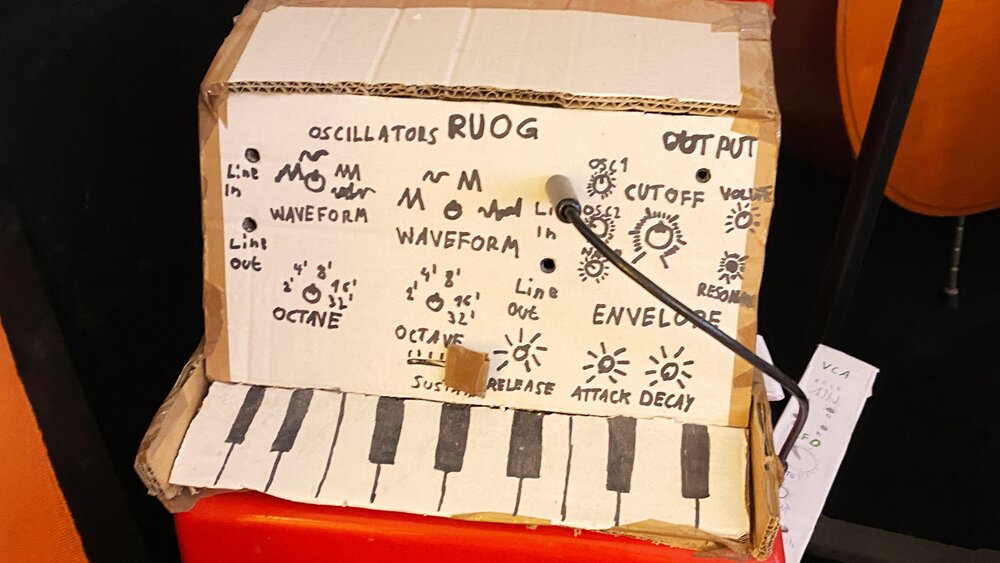Inventing with wires and a symphony of modular sound

In the cozy environs of his tranquil Kreuzberg flat, Max Knoth has surrounded himself with gear and scores alike. The polymath engineer, arranger, sound designer, and composer has worked with the likes of Ryuichi Sakamoto, Lou Reed, Danny Elfman, Rachel Portman, Alan Silvestri and Carsten Nicolai. Now he’s able to bring that ear for engineering and orchestration to a sample library that celebrates modular synthesis. We got to catch up with Max to get to know his approach to electronic sound and what led him there.
What sort of sounds did you choose for this collection?
How did you capture it?
In modular synthesis, if you patch something and you have a sound, then you had better press the record button, because later it’s gone. Even while you’re working on it, there may be a moment that was good. I record everything I do.
It’s different stuff: Noisy stuff, rhythms, patterns. I like electronic music more for its quality of genuine electronic sound. And getting as far away as I can from imitating other instruments. I like to start with something that sounds unusual, but that I can only produce with that instrument.
Sound-wise, I would say this is everything ... everything that, when I listen to sound, is what I want to hear.
Now there’s this whole collection—how did you first come to electronic sound?
[My brother and I] have been interested in electronic music since we were kids. We listened to Kraftwerk and so on. We loved that. “What is that?” 1981—it was like strange stuff. “Numbers” ... eins, zwei, drei, für, fünf, sechs, sieben... for a kid this was really an experience. And this punk stuff that came out in Germany—Palais Schaumburg, Wirtschaftswunder, stuff like that. We were fans of Der Plan, which started as an imitation of The Residents, we loved the Residents..
There was this classmate of my brother’s, and they had bought a KORG MS-20. And they said, well, but they don’t do so much with it—maybe you want to buy it? I remember it was like 800 Marks, which would be like 800 Euros nowadays. And my parents, they spent all the money they had on us. I don’t come from a rich family, not at all. So they never bought anything for themselves. They said if you want to make music, we support you. 800 Marks was a lot of money for my parents.
At a certain point my brother was very serious about this music, and my parents bought a JX-3P and a DX-7.
What started your synth collection? How did you build your own relationship with electronic sound?
I started with a used MS-20 and an SQ-10.
It may not look like this, but I don’t play the piano. I arrange and do everything on the piano and on guitars, my main instrument, and I also play with double bass. But a keyboard doesn’t speak to me. And then, when Moog started releasing this small stuff—the DFAM and so on—I started to get interested. And then my son took me to Superbooth. And I bought a DFAM, I bought the Doepfer Dark Time, [the] Make Noise stuff.
I came back to a more noise-based approach. I listened to a lot of noise stuff. It clears your mind. I’m a trained audio engineer, so noise is my day-to-day job. And then at some point, I developed a vision of what sound I wanted to do. That’s how I really seriously got into this modular stuff.

With all the options we see around us, how do you start? How do you approach a patch?
There’s a score by Stockhausen, and it says, ‘without intention, look at this page and take one phrase from it.’ So without intention, I go to the modules and say: ‘I never tried out what happens when I modulate the phasing but get the reverb back and modulate the reverb or modulate the frequency of the phasing…’ or whatever. For me as a sound engineer, it’s a mixture of sound and circuits.
I do read. In the last few years, I’ve read about 1200 PDF pages, because I’m really into manuals. It’s this intense work, and then going to only one possibility. Often it’s like, I never tried that, why don’t I try that? That’s what gets my juices flowing. Or there’s a sound that I have in my ear. That’s how I do orchestration and arrangements, too.
Do you have any favorite modules or sound tools?
If I use an oscillator, I’m often using it by pinging filters - like the Make Noise QPAS, or Mannequins Three Sisters (feeding a signal into the filter with resonance turned up at or near self-oscillation). [Both the Three Sisters and QPAS have features for triggering resonance.] I’m pretty sure this is not even one part per million of what you can do. There are infinite sounds out there. I always try to discover something or make something that is more than just switching something on and recording. Make Noise Maths I use all the time because it’s really a great way to give you some electrical irregularity. It adds the spice to the whole thing. I really love the Make Noise Erbe-Verb, going to this point with feedback. You really have a sort of symphony with this one module alone.
I like the Make Noise and Intellijel and Qubit modules—you have access to every parameter. The more the merrier. The more you modulate. Up to a point. I’m more on the busy side—also in my arrangements because I think if you have an orchestra, let them play. The same with modules.
What’s this cardboard thing behind you with the handmade labels?
My son made it for me on my birthday when he was 14 or so. This is real 5U. He’s called Rudi, and this is a mix of Moog and Rudi. The RUOG. Then I got some cardboard modules, too.

You said you’re still exploring sounds. What’s your approach behind it all?
I want pure electronic data for this library. I'm often inspired by the sound and function of the modules itself. I need the rest of my life to discover new things.